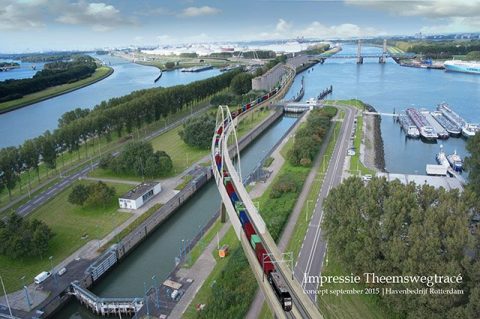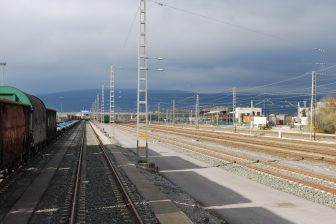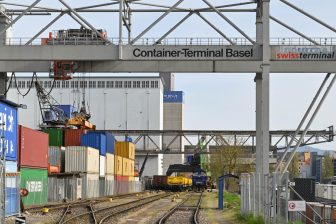
Rotterdam gets go-ahead for port line Betuweroute revamp
The Port of Rotterdam Authority has been given the go-ahead for a 275 million Euros port railway scheme that will redirect a 4 kilometre stretch of line marking the start of the vital Netherlands-Germany Betuweroute freight route. The new Theemseweg route will be completed by 2021, and means rail traffic will no longer be delayed by having to cross the Caland Bridge.
Approval of the scheme by Dutch Transport Secretary Sharon Dijksma comes only after a number of amendments were made to the original plans, based on concerns over design and noise, particularly for residents of nearby Rozenburg. The scheme is still subject to an appeals process, which runs until July.
Sound-absorbing
Key design changes relate to the raised edge along the entire length of the pillar-supported concrete structure, with the new plan incorporating a sound-absorbing element. The height of the raised edge has also been increased from 1.4 metres to 1.7 metres above the surface of the track. These measures will play a significant part in reducing noise pollution for those living and working near the line.
An important rail and road traffic hub, the Caland Bridge (Calandbrug) is a vertical steel lift bridge over the Caland Canal, at the mouth of the port, but by 2020 it will have reached the end of its technical lifespan, says the port authority. By redirecting the railway line over the Rozenburgse Sluis and via Theemsweg, rail traffic taking goods from the port and towards the European hinterland will no longer be obstructed by shipping, considerably improving traffic flow.
ProRail
The Dutch Ministry of Infrastructure and Environment is contributing over 100 million Euros to the project, while the European Union is providing 62 million Euros. The rest is coming from Rotterdam Port Authority, which will construct the new route, before handing over control to ProRail, the Dutch rail infrastructure manager. The port authority, ministry and ProRail are holding an open event on June 13 for people to view the plans, and the appeals procedure is open until July 4.
The project is vital to the future success of the Betuweroute, which when fully completed will open up huge new freight opportunities between Rotterdam and the European mainland. It is part of the Rhine-Alpine TEN-T Corridor, connecting both Rotterdam and Antwerp to Genoa, via some of the major economic centres of Germany’s Rhine-Rhur & Rhein-Main-Neckar regions.
Cross-border traffic
The project centres on a three-track expansion of the route which will significantly streamline cross-border traffic between Germany and The Netherlands. The extra rail will mean ensure that freight and passenger services can run independently, instead of having to share line space. But it has recently run into problems, with the German section facing a significant delay. Secretary Dijksma has already confirmed that it is no longer realistic that the target completion date of 2022 will be met.





